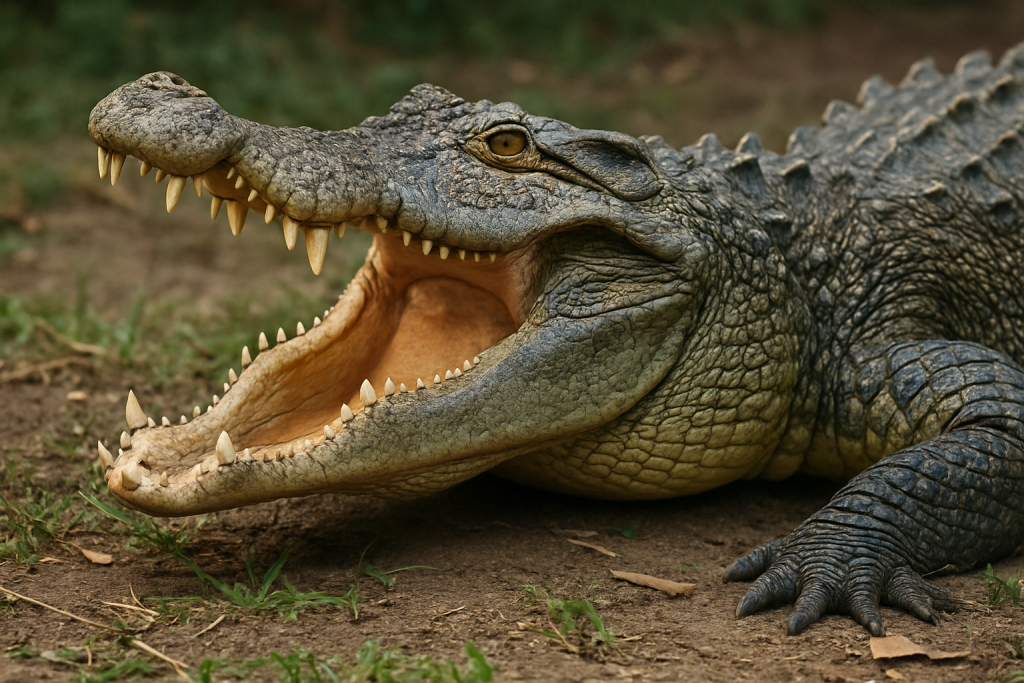⏲️ Estimated reading time: 5 min
No matter how many encounters you’ve had with crocodiles or alligators, these reptiles remain wild and dangerous. Experience doesn’t make you invincible. Here’s why respecting these powerful predators is always essential.
🐊 Experience Doesn’t Equal Safety Around Crocodiles and Alligators
Crocodiles and alligators are among the most formidable reptiles on Earth. With powerful jaws, lightning-fast reflexes, and territorial instincts, they demand caution regardless of how familiar you might think you are with them. Some seasoned handlers, hunters, or nature enthusiasts often assume that their experience grants them immunity. That’s a dangerously false belief.
Let’s explore the risks these creatures pose and why safety should always come first.
⚠️ The Reality of These Reptilian Predators
Crocodiles vs. Alligators – Know the Difference
- Crocodiles tend to be more aggressive, with V-shaped snouts and a worldwide distribution in Africa, Australia, Southeast Asia, and the Americas.
- Alligators are native mostly to the southeastern United States and parts of China. They are generally more docile but still highly territorial and dangerous.
Both can grow over 15 feet long and weigh over 1,000 pounds. Their bite forces exceed that of lions and tigers.
🧠 “I’ve Done This Before” – A Fatal Mindset
Many attacks happen when people become overconfident. They feed these animals, swim in infested waters, or approach them for photos or content. But crocodilians don’t “know” you. They don’t bond or play. They act on instinct. No matter your background zookeeper, researcher, or amateur adventurer complacency can cost lives.
📈 Documented Attacks on Experts
There are numerous incidents where experienced professionals have been injured or killed:
- Steve Irwin, the famous “Crocodile Hunter,” was not killed by a crocodile but by a stingray a stark reminder that even experts are vulnerable to wildlife.
- An experienced handler in Florida lost his arm while feeding a gator he had worked with for 10 years.
- Poachers and locals in Africa with deep generational knowledge have still fallen victim to sudden crocodile attacks while fishing or crossing rivers.
The point? Nature doesn’t respect your résumé.

🛑 Why They’re So Dangerous – The Science Behind It
- Incredible camouflage: Crocodilians blend with their environments, striking without warning.
- Death roll: Once they latch onto prey, they spin violently, breaking bones and tearing flesh.
- No fear of humans: In areas where people feed or interact with them, they can become even bolder.
This is not behavior you can outsmart or train against. It’s evolution in action.
🌊 Where Are You Most at Risk?
- Florida, USA – Alligator-infested lakes and rivers are common, especially near residential areas.
- Northern Australia – Saltwater crocodiles, or “salties”, are the most aggressive species in the world.
- Sub-Saharan Africa – Nile crocodiles are known to kill hundreds each year near rivers and watering holes.
- Southeast Asia – From Myanmar to Indonesia, crocodile attacks are often underreported but frequent.
Always check local warnings and avoid swimming in unfamiliar waters, especially at dawn and dusk.
🤔 Can You Safely Observe These Creatures?
Yes but only under professional, supervised conditions.
- Visit licensed sanctuaries or zoological parks.
- Observe from safe, designated viewing areas.
- Never feed or provoke crocodiles or alligators in the wild.
- Use binoculars or zoom lenses instead of getting close for photos.
💡 Tips to Stay Safe Around Crocodiles and Gators
- Never swim in known habitats.
- Don’t fish or clean fish near water edges.
- Avoid walking pets near shorelines.
- Never feed them it’s illegal in many places and emboldens attacks.
- Educate others, especially tourists or children.
- Heed all warning signs and local advisories.
- Keep a safe distance: at least 15–20 feet (5–7 meters).
🎥 Why We’re Obsessed with Them in Media
Crocodiles and gators are often featured in documentaries, horror movies, and viral videos. But real life isn’t edited for drama it’s far more dangerous. For every clip showing a successful interaction, dozens end in tragedy.
Wildlife influencers must take responsibility and educate viewers, not encourage reckless engagement.
🐊 Final Thought: Never Underestimate a Predator
The wild doesn’t care how many times you’ve been out there. Each encounter with a crocodile or alligator carries risk. Your best bet is not to “test your luck” but to respect the power of nature from a safe distance.
🔚 Wrap-Up
No matter how much experience you have, crocodiles and alligators remain dangerous, unpredictable, and incredibly powerful. The more we respect their nature and territory, the safer we all are. Whether you’re a wildlife enthusiast, a local fisherman, or a curious tourist, remember this: one mistake is all it takes.
🔔 For more tutorials like this, consider subscribing to our blog.
📩 Do you have questions or suggestions? Leave a comment or contact us!
🏷️ Tags: crocodiles, alligators, wildlife safety, animal attacks, reptile facts, dangerous animals, predator behavior, Florida wildlife, Australia crocs, nature survival
📢 Hashtags: #CrocodileDanger #AlligatorSafety #WildlifeRespect #PredatorAwareness #NatureFacts #StaySafeOutdoors #CrocAttack #WildlifeExperts #RespectNature #ReptileRisks
🧠 What You Should Always Remember
Never trust a wild animal to act tame. Whether it’s your first encounter or your hundredth, a crocodile or gator doesn’t owe you familiarity they owe you nothing. Stay smart, distant, alive.
Only logged-in users can submit reports.
Discover more from HelpZone
Subscribe to get the latest posts sent to your email.

